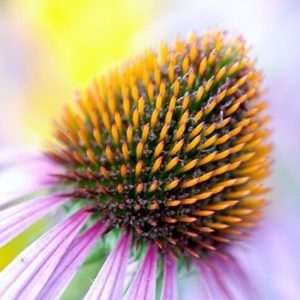 Echinacea is possibly the most well-known herbal remedy that has been in use for over 400 years. It is a North American cornflower that the Great Plains tribes have long used as a medicine.
Echinacea is possibly the most well-known herbal remedy that has been in use for over 400 years. It is a North American cornflower that the Great Plains tribes have long used as a medicine.
Prior to the introduction of antibiotics in 1950, it was Echinacea that held esteemed status in the medical community. However, as the health care industry moved toward antibiotics and modern medicine practices, Echinacea was lost in the furor.
There are different chemicals in the root and the upper part of the plant. The root holds high concentrations of oils that are known to trigger immune functions.
Echinacea’s chemical components are highly powerful in stimulating the immune system and provide substantial therapeutic value. It also contains flavonoids, inulin, vitamin C, essential oils, and polysaccharides.
The University Of Maryland Medical Center notes that the part of the plant that provides the most medicinal value is the portion that grows above the ground. This could be reflected in the decision of Germany authorities to only approve those portions for human use.
In Germany, Echinacea is an approved remedy for upper respiratory infections, colds, urinary tract infections, and slow healing wounds.
Medicinal Uses
Perhaps the most common use for Echinacea is to battle the cold. What most people fail to realize is that due to its ability to boost the immune system, taking Echinacea regularly can actually prevent you from developing the cold.
According to a study from the University of Connecticut, it can reduce your chances of catching the cold by up to 58%. It also reduces the length of your cold by 1.5 days.
In addition to the common cold, and urinary tract infections Echinacea can treat a number of issues. Native Americans used it as a general cure all, but studies have shown it can be effective in treating tonsillitis, streptococcus infections, warts, ear infections, and infections of the bloodstream.
In addition, it can relieve the symptoms of anxiety, migraines, acid indigestion, pain, dizziness, ADHD, arthritis, as well as improving physical performance.
Many people apply it to the skin in order to treat gum disease, boils, abscesses, ulcers, burns, skin wounds, psoriasis, eczema, sunburn, yeast infections, hemorrhoids, bee stings, mosquito bites, and snake bites.
Additionally, there is a suggestion that it can help prevent cancer. While there are limited studies on the subject, the implication is that because it can boost the immune system it changes how the body handles foreign substances.
The stimulation of the immune system eliminates cancerous cells as they appear, thus preventing the development of the disease. While it is not considered an antioxidant, it appears that it may help to eliminate free radicals through its stimulation of the proper immune system cells, such as T cells.
There are no side effects when taking Echinacea, unless you take it in large quantities, which may result in dizziness and nausea. However, when injected it can cause severe reactions such as headache, fever, insomnia, joint aches, nausea, disorientation, dizziness, diarrhea, and a numb tongue.
While studies into Echinacea’s healing properties are limited, and generally only involve its effect on the cold, it is clear that it has a purpose. The fact that regular use prevents colds from developing shows that the claim it bolsters the immune system is accurate.
The Mayo Clinic has stated that it is safe to use while pregnant or breastfeeding, however studies are limited on the subject so caution should be exercised. The most important factor is that you ensure you are purchasing a product that contains real Echinacea. Look for the THR checkmark on packaging.






